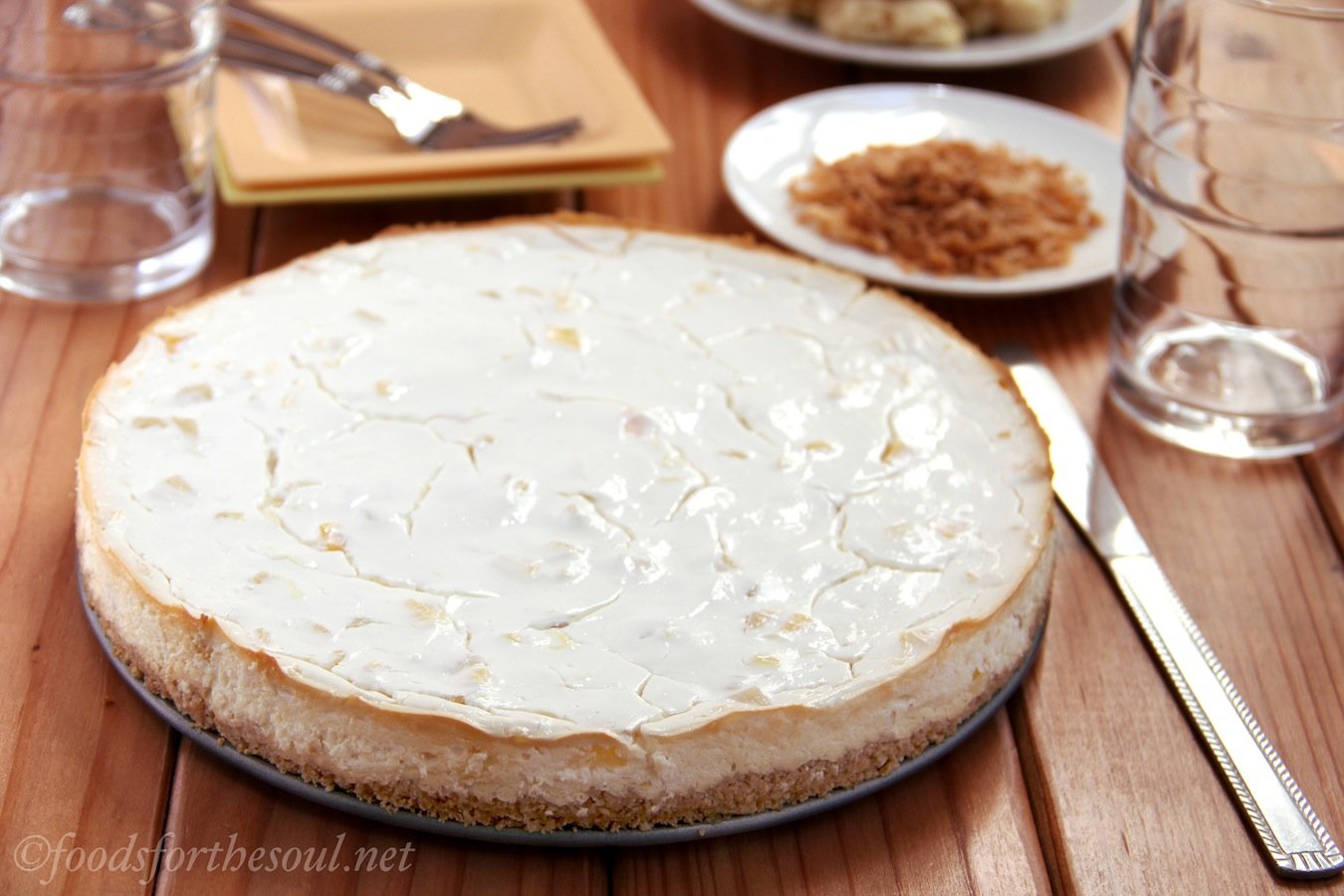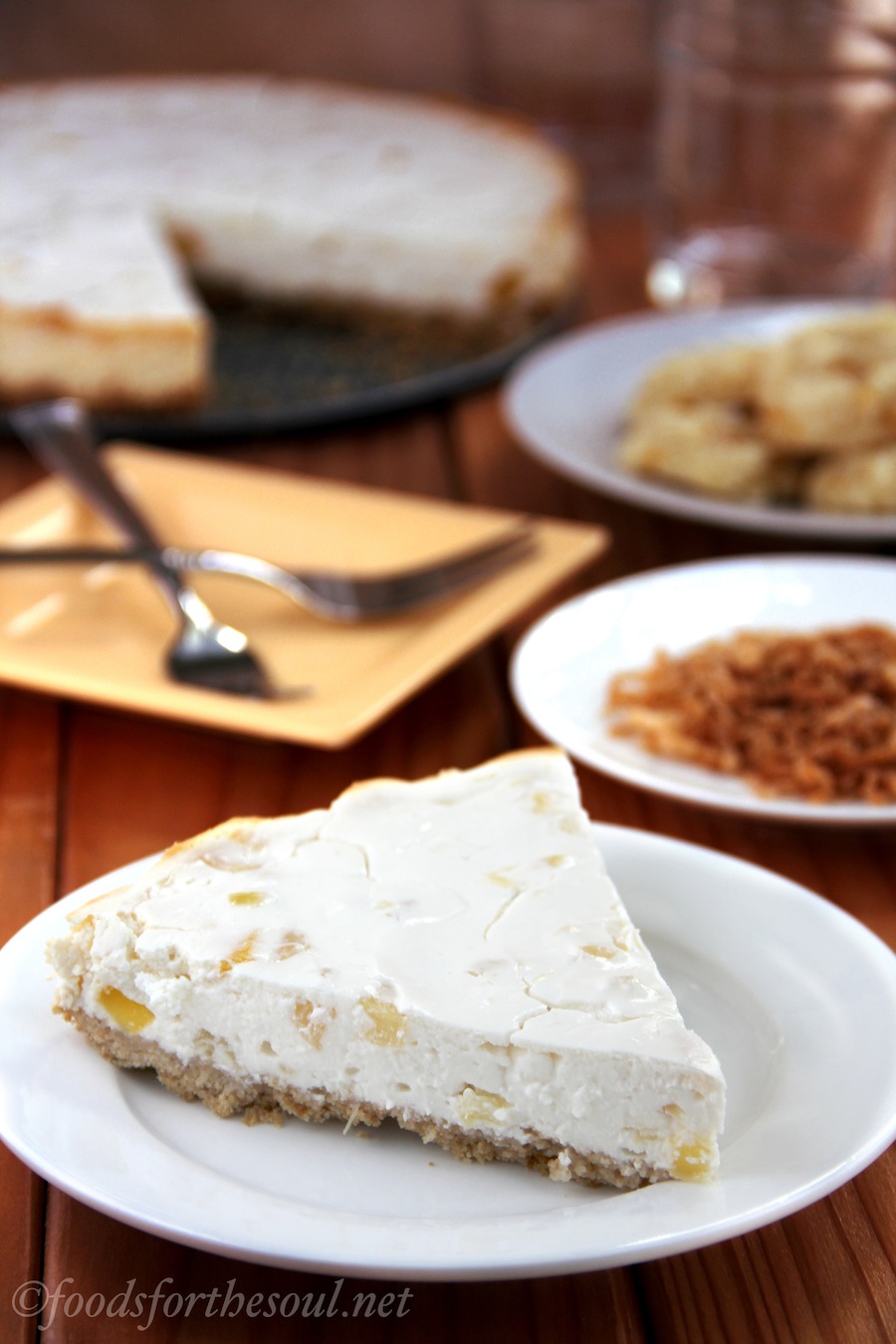One Saturday during high school, my friend showed up on my doorstep holding a square white shoebox. “My boyfriend baked cheesecake!” she bragged as I peeked inside. “It’s amazing; he’s practically a gourmet chef!”
I tried a bite of the rich dessert and immediately handed off the entire pie to my parents as soon as she left. It tasted exactly like smear for my cinnamon raisin bagels. Her boyfriend must have forgotten the sugar or vanilla—or both!
I actively avoided cheesecake for ages afterward, nearly faking lactose intolerance at a Christmas party or two, until a few years ago when I randomly craved its texture. Not the taste. The texture.
To ensure I’d eat an entire slice, I completely masked the tangy cheesiness by mixing in half a jar of dark chocolate sauce. After devouring most of the resulting cheesecake in three days, I began brainstorming different flavor combinations to try: butterscotch, caramel, strawberry, and…
Pineapple mango!
This cheesecake is full of fruit and tastes just like the tropics!
- Preheat the oven to 300°, and lightly coat a 9” springform pan with nonstick cooking spray.
- To prepare the crust, add the graham crackers to a food processor, and pulse until they turn into fine crumbs. Mix together the graham cracker crumbs, butter, and 1 egg white in a small bowl. Press the mixture into the bottom and slightly up the sides of the prepared pan. Bake at 300° for 6-8 minutes, then cool completely.
- To prepare the filling, cream the cream cheese and sugar in a medium bowl. Add in the remaining egg whites, flour, and vanilla, mixing well. Add in the Greek yogurt, mixing just until incorporated. Fold in the pineapple.
- Spread the filling on top of the cooled crust, and bake at 300° for 45-50 minutes, or until the center barely jiggles when shaken. Cool to room temperature before covering with plastic wrap, ensuring that it touches the top of the cheesecake, and chill for at least 8 hours.
- Just before serving, preheat the oven to 350°. Place the coconut on a baking sheet, and bake for 4-6 minutes, stirring every minute, or until just barely golden. Serve each slice with 1 teaspoon of toasted coconut.





can vanilla creme stevia be substituted for the sugar? if so, should the vanilla extract also be omitted? thanks!
I can’t guarantee that particular substitution will work. If you do try it, I’d suggest starting with ½ teaspoon of vanilla creme stevia plus 3-4 tablespoons of milk to make up for the missing volume from the sugar, and adjust both as needed to suit your tastes and achieve the proper consistency. Leave the amount of vanilla extract as is. 🙂 I’d love to hear what you try and how it turns out Stephanie!